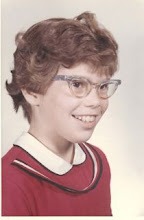The Magical Fusion of Place and Imagination
As a beginning author devouring books about the writing craft,
whenever I reached the inevitable lesson to “write what you know,” I tuned out.
After all, I wanted to write fantasy novels. So how could I “know” unicorns,
dragons, or girls who travelled the galaxy on tesseracts? I wanted to write
whatever I could imagine—a much bigger realm than what I knew.
Here’s the irony. A specific place—my father-in-law’s
orchard in Eastern Washington (the Farm) inspired my first and third fantasy
novels. The Farm also inspired my recent contemporary verse novels, After the River, the Sun and Eva of the Farm.
 |
| Dia's latest book, just out |
I‘ve spent twenty-five years coming to know
the farm in all its seasons. In the fall, walking through the orchard, I’ll whisper
to the reddening apples, “I knew you when you were blossoms.” I’ve seen fire on
the mountain and felt fear that the farm would burn. I’ve seen the wild canyon
behind the farm change from drought, flood, and storm.
In all of my novels inspired by the Farm, my intimate
knowledge of the place fused with my imagination to create new story
possibilities. This happened even more powerfully in my contemporary novels
than in my fantasy novels. Why? My imagination could use all the specific
details without filtering to run wild.
Here’s an example. In the canyon, a dead tree snag looms
high on a foothill, silhouetted against the sky.
The snag has a pointy,
blackened top. It spooked me for years, seeming somehow demonic (surprise— I
have a vivid imagination). One day, walking through the canyon, I glanced up at
the snag. Something about how the light fell, or something inside me that was tired
of being spooked, changed what I saw. Suddenly the pointy top looked like a
wizard’s hat, the snag like a wizard in a robe. I shouted up, “I name you the Good Wizard who watches
over the canyon.” Now when I walk up the canyon, I greet Good Wizard joyfully.
I used this incident in Eva of the Farm—Eva uses the Greater
Power of Imagination to transform the Demon Snag into Good Wizard.
In After the River, The Sun, a companion novel,
Good Wizard actually pointed the story in a new direction. Eckhart needed to
find a way to atone for his parents’ death. But at that moment in the story’s
development, neither Eckhart nor I knew how he’d do that. To find out, I sent Eckhart and Eva up the
steep foothill on a pilgrimage to visit Good Wizard. And there, to my surprise,
Good Wizard showed Eckhart what to do:
The wind rose,
whistling through the stump,
and it seemed as though Good Wizard himself
were whistling
as he pondered Eckhart’s question.
A pine tree swayed,
and Eva’s hair blew in ribbons
around her face.
Good Wizard whistled louder.
Eckhart blinked,
for the wizard’s arm-like branch
pointed straight
to the top
of Heaven’s Gate Mountain.
As the wind rose
and rose,
as the whistling pierced
the scars and the weariness
in Eckhart’s heart,
as he became light,
so light,
almost lifting from the ridge—
Eckhart knew
exactly what he had to do
to atone.
He had to go higher.
he had to go
all the way
to the very top
of Heaven’s Gate
Writing about what I know and love, the Farm, never limited
me as a writer. Instead, specific details of place ignited my
imagination—making that realm bigger and more magical than I could ever have
imagined.
Thank you, Dia, for this reminder of how the concrete and specific give each story its unique voice!





Thank you, Kirby!
ReplyDelete